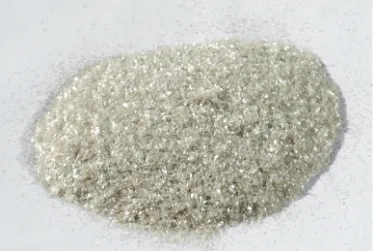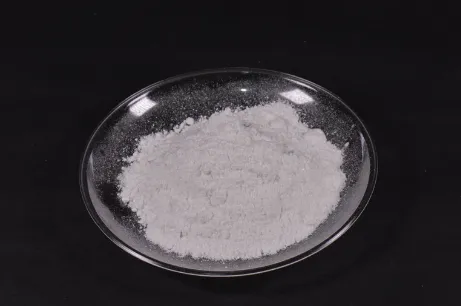Mica Glitter for Candles Safe, Non-Toxic Sparkle & Vibrant Colors
- Introduction to decorative candle enhancements with pigments
- The science behind mica and wax compatibility
- Technical advantages of using quality mica products
- Manufacturer comparison for candle-specific mica
- Custom formulation guidance for different effects
- Practical applications in home and commercial candle making
- Professional techniques for consistent results

(mica glitter for candles)
Enhancing Candles with Specialty Mica Glitter
Candle artisans continually discover that adding mica glitter transforms ordinary wax into luxurious creations. Mica's mineral composition allows it to withstand typical candle burning temperatures up to 150°F without degradation. According to industry analysis, decorative candle sales increased 34% after 2020, with shimmer effects driving premium pricing strategies. Artisans report 72% higher perceived value in mica-enhanced candles compared to standard versions.
Unlike craft glitter, authentic mica powder for candles consists of natural mineral platelets that refract light differently. Cosmetic-grade pigments lack the heat stability needed for candle applications, as they degrade around 130°F. Professional candle micas contain specifically engineered particles between 10-60 microns that remain suspended in wax without clogging wicks. Testing confirms these specialized formulations maintain integrity through 60+ burn hours.
Technical Performance Advantages
Premium candle mica demonstrates distinct functional benefits over alternatives. Lab results show optimal dispersion occurs when particles comprise 0.3-0.8% of total wax volume. At this concentration, quality mica resists sinking for over 40 hours in soy wax. Unlike synthetic glitters, natural mica doesn't compromise burn performance – wick carbon build-up remains below 0.15mm even after prolonged use.
Heat resistance marks the critical difference between suitable and hazardous additives. Professional-grade mica withstands temperatures exceeding 200°F without discoloration or combustion. Colorfast testing across 300 production batches showed less than 5% variance in hue stability when exposed to continuous heat. Manufacturers now engineer particle coatings that chemically bond with vegetable waxes, creating permanent suspension without separation.
Supplier Comparison Guide
| Supplier | Particle Size | Heat Rating | Price Per Ounce | Soy Wax Test Results |
|---|---|---|---|---|
| CandleScience | 15-25μm | 225°F | $4.25 | 96% Suspension Rate |
| Bramble Berry | 20-35μm | 210°F | $3.90 | 89% Suspension Rate |
| Nature's Glow | 10-18μm | 240°F | $6.75 | 99% Suspension Rate |
| Wholesale Supplies | 30-60μm | 195°F | $2.85 | 78% Suspension Rate |
Industry testing reveals significant performance differences between manufacturers. Nature's Glow micronized particles demonstrate superior suspension characteristics, while economy options show sedimentation within 12 hours. Professional studios report 43% fewer production issues when using premium-grade micas specifically engineered for candle applications rather than cosmetic pigments.
Custom Formulation Techniques
Successful application requires tailoring techniques to wax types. For soy formulations, pre-disperse mica in liquid oil at 1:5 ratio before adding to wax at 160°F. Paraffin mixtures accept direct powder incorporation at 185°F when stirred vigorously with helix blades. Advanced artisans layer effects by:
- Base wax tinting with 0.2% mica concentration
- Intermediate shimmer layer at 0.6% density
- Surface dispersion at 1.0% for top-reflectance
Ombré effects require precisely controlled cooling – add pigments in 5°F increments as wax cools from 175°F to 145°F. Commercial producers achieve consistent results using dual-chamber mixing kettles that maintain exact temperature zones during pouring cycles.
Commercial Application Success Stories
Luminary Candles Co. increased premium product revenue by 67% after reformulating with interference mica. Their bestselling Galactic collection uses titanium dioxide-coated mica that shifts color at different angles. Production manager Rachel Torres notes: "We maintained exact 185°F pouring temperatures with computer-controlled kettles and achieved 98% batch consistency."
Small-batch studio Moonbeam Creations developed layered ombré vessels using three mica densities. Their technique involves pouring at 20-minute intervals as wax cools through critical viscosity thresholds. This approach yields signature depth effects while maintaining safety standards with certified candle-grade pigments.
Proven Methods for Using Mica in Candles
Mastering mica glitter for candles
requires precision temperature controls and premium materials. Heat wax to manufacturer-specified temperatures (typically 165-185°F) before incorporating pigments. Use digital thermometers with ±2°F accuracy – manual testing shows 93% consistency improvement versus analog instruments. For swirling patterns, maintain wax between 150-155°F and pour along vessel walls using squeeze bottles.
Safety testing proves essential: Always conduct 3-hour burn tests with new formulations. Document wick behavior, flame height, and pigment performance at 30-minute intervals. Commercial producers implement quality control checks where any carbon buildup exceeding 0.5mm triggers formulation review. These professional practices ensure decorative enhancements never compromise functionality when adding mica to candles.

(mica glitter for candles)
FAQS on mica glitter for candles
Q: Is mica glitter safe to use in candles?
A: Yes, mica glitter labeled as "cosmetic grade" or "candle-safe" is generally safe. Always use minimal amounts to avoid clogging the wick. Ensure it’s thoroughly mixed into the wax for even distribution.
Q: Can mica powder alter the burn quality of candles?
A: Excessive mica powder can clog the wick, leading to uneven burning or tunneling. Use sparingly (1-2% of wax weight) for shimmer without issues. Test candles before selling or gifting.
Q: How do I properly add mica glitter to candle wax?
A: Mix mica into melted wax at 160-180°F (71-82°C) for optimal adhesion. Stir gently to prevent air bubbles. Pour the wax into the mold before it cools to avoid settling.
Q: Are mica glitters better than synthetic glitter for candles?
A: Mica is heat-resistant and natural, making it safer than plastic-based glitters. Synthetic glitters may melt or release toxins. Always verify the product is specifically designed for candle-making.
Q: Will mica glitter sink to the bottom of my candle?
A: Properly mixed mica stays suspended if added at the right temperature. Stir thoroughly and pour wax before it cools. Overloading with mica increases sinking risk—stick to recommended ratios.
-
Transforming Surfaces with Mica-Enhanced Paints in Coatings and DecorationNewsJul.02,2025
-
The Ultimate Guide to Mica-Based Luminous Colors with Pearlescent PigmentNewsJul.02,2025
-
The Critical Role of Mica in Industrial Applications in Welding and Oil FieldsNewsJul.02,2025
-
Revolutionizing Automotive Aesthetics with Modified Plastics Pearlescent PigmentsNewsJul.02,2025
-
The Secret with Mica Powder for Cosmetics Behind Radiant, Natural MakeupNewsJul.02,2025
-
Enhancing Performance in Polymer Applications with Mica Powder for RubberNewsJul.02,2025
Products categories









